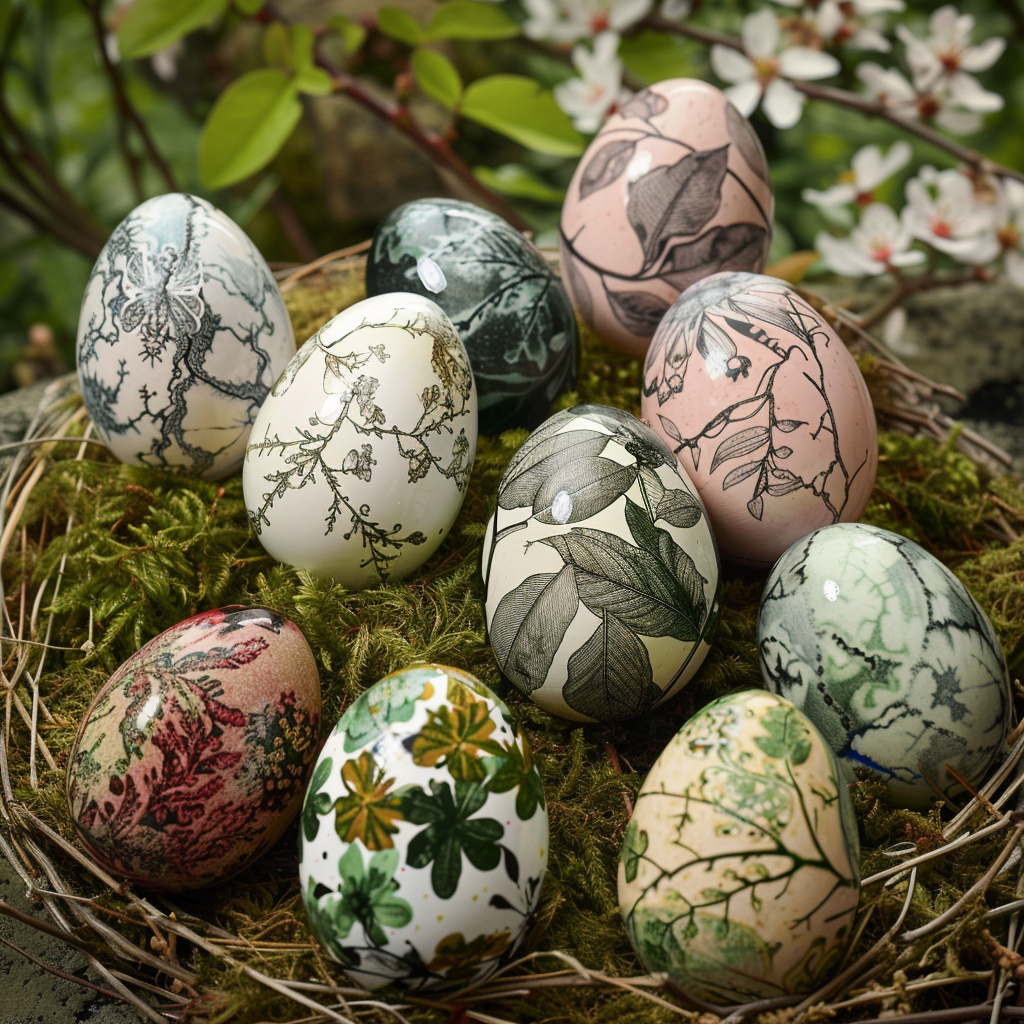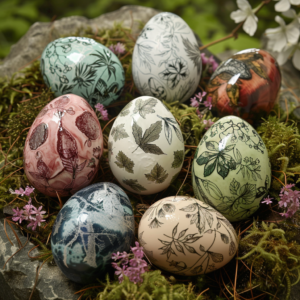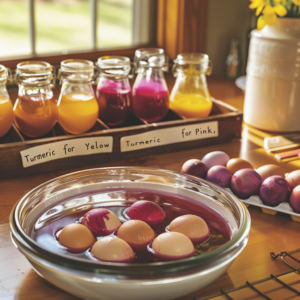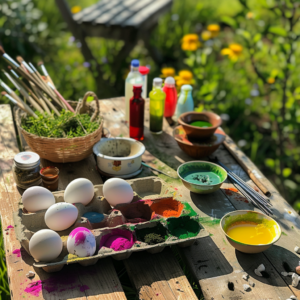
As the Ostara season approaches, bringing with it the promise of renewal and rebirth, what better way to embrace the essence of spring than through the timeless tradition of egg decorating? At CottageCoreHolly, we cherish the practice of connecting with nature’s palette, especially when celebrating the balance of day and night that Ostara symbolizes. This guide will walk you through the delightful process of natural dyeing for decorating your eggs, a method that not only honors the earth’s vibrant hues but also adds a meaningful touch to your spring equinox festivities.

Opting for natural dyes to decorate your Ostara eggs is a nod to the cycles of the natural world, reflecting the Cottage Core ethos of sustainability and harmony with nature. Just as we celebrate Ostara, learning how to celebrate imbolc can also enrich our understanding of seasonal transitions and the importance of living in tune with the earth. These dyes are crafted from common kitchen scraps or foraged materials, reducing waste and avoiding the chemicals found in conventional egg dyes. Each color, derived from the earth, carries its own story and energy, infusing your Ostara celebration with layers of meaning.
Before diving into the dyeing process, you’ll need to prepare your eggs. Hard-boiling is the most common method, but for eggs that will last beyond the season, consider blowing out the contents to create hollow shells. This method preserves the eggs indefinitely and allows them to be displayed as part of your seasonal decor.
The magic of natural dyes lies in their simplicity and the surprising vibrancy of colors you can achieve from everyday ingredients. Here’s how to create a spectrum of beautiful, natural colors, which is also mentioned here on ndsu.edu :
Ingredients: Turmeric or onion skins
Process: For turmeric, add 2 tablespoons of ground turmeric to 2 cups of water and bring to a boil. For onion skins, use the outer skins of about six onions in 2 cups of water. Simmer for 15-30 minutes, then cool.
Ingredients: Beets or red cabbage
Process: Chop 1-2 beets or a quarter of a red cabbage and add to 2 cups of water. Boil for 30 minutes, then strain out the solids. For a deeper red, add a splash of vinegar to the beet dye.

Ingredients: Red cabbage (for blue), spinach or grass (for green)
Process: For blue, use the same process as for red but add a tablespoon of baking soda to the cabbage water after boiling. For green, simmer a handful of spinach or grass in 2 cups of water for 30 minutes, then cool and strain.
Ingredients: Coffee grounds or onion skins
Process: For brown, use 1 cup of strong brewed coffee or 2 tablespoons of coffee grounds simmered in 2 cups of water. For orange, follow the same process as for yellow onion skins, but use red onion skins instead.
Once your dyes are prepared and cooled, it’s time to dye your eggs. Place the eggs in the dye, ensuring they are completely submerged. The longer the eggs remain in the dye, the deeper the color will be. For a more vibrant hue, leave the eggs in the dye in the refrigerator overnight.
Decorating eggs with natural dyes is more than just a craft; it’s a way to connect with the traditions of Ostara, celebrating the renewal and fertility that the spring equinox brings. As you prepare your eggs, reflect on the themes of balance, renewal, and growth that how to celebrate ostara embodies. Understanding these themes can deepen your connection to the season and enhance your celebrations. Whether you’re new to Ostara or a seasoned celebrant, exploring different ways to honor this time can bring fresh perspectives and joy.

Incorporating natural egg dyeing into your Ostara celebrations not only adds a splash of color to your festivities but also brings a deeper appreciation for the natural world and its cycles. For more inspiration on celebrating the seasons and embracing a sustainable lifestyle, explore our articles on homemade toothpaste, Yule celebrations, and cozy games perfect for cottage core enthusiasts.
This Ostara, let the act of dyeing eggs with natural ingredients be a meditative practice, a moment to slow down and tune into the rhythms of the earth. For those in unique environments, like the desert, you might find inspiration in our guide on celebrate ostara in the desert. It offers creative ways to connect with the season’s themes, regardless of your surroundings. As you watch the colors unfold, may you feel a renewed sense of connection to the natural world and the cycles that guide our lives. This connection is akin to understanding the meanings of the 12 full moons, where each phase brings its own energy and significance, adding depth to our seasonal celebrations. Happy Ostara!